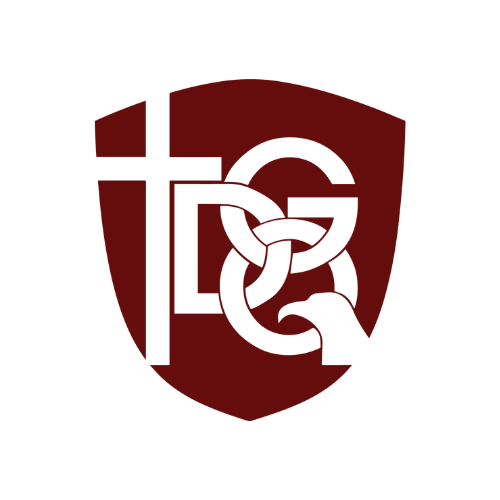Home › Academics › Curriculum › Physical Education Overview
GDQ Physical Education Curriculum Overview
The Holy Spirit resides in all believers. I Corinthians 6:19 states “Do you not know that your body is the temple of the Holy Spirit. . .” As students have the responsibility to look after their bodies, they need to learn how to do so.
Each person is accountable before God as an individual. (Romans 14:4). God asks us to use the resources He has given us to the best of our abilities (Parable of the Talents, Mathew 25:14-30). Therefore, a key aspect of the physical education program is to help students learn how best to develop the physical and mental aptitudes that God has gifted them with.
Life is a race in many aspects (Philippians 3:12). Physical activities and challenges train students to perseverance when they are weary and tired.
Believers are one in the body of Christ (Romans 12:5). Physical education provides students opportunities to develop as a team player, to enjoy the benefits of teamwork and to recognize the harm when teamwork is lacking.
GDQ’s physical education curriculum and instruction aim to enhance students’ aptitudes to
- succeed in demanding physical activities and competitive sport for sustained periods of time.
- develop competence in a broad range of activities that develop personal fitness and promote an active, healthy lifestyle.
- understand and apply the principle of balancing healthy activity with rest.
- exhibit good sportsmanship based on the Christian principles of helping, encouraging and loving other players, including members of an opposing team.
- demonstrate good team ethics, including correcting in love, working as a team, playing for enjoyment, helping teammates control negative passions and directing them towards positive results.
- use all their effort at all times, regardless of preference of physical activity.
Pre 1st – Grade 4 Physical Education Program
Students in Pre-1st through grade 4 participate in an array of activities focused on the development of fundamental movement skills that allow students to grow in competence and confidence, “agility, balance and coordination, individually and with others.” As students mature they learn how to “use these skills in different ways and to link them in sequences. “Students enjoy physical activities, increasing in challenge, that give them opportunities to collaborate and compete against themselves and others.” Students develop an understanding of how to improve in different physical and sport activities and “learn how to evaluate and recognise their own success.”
Grade 5 – Grade 8 Physical Education Program
Students in grades 5-8 build upon skills learned in the prior grades, “become more competent, confident and expert in their techniques and apply them across different sports and physical activities.” Specific areas of focus include
- Using and developing “tactics and strategies to overcome opponents in direct competition in team and individual games.”
- Developing technique and improving “individual performance in competitive sports.”
- Taking part in “outdoor and adventurous activities in a range of environments which present intellectual and physical challenges and which encourage students to work in a team, building on trust and developing skills to solve problems, either individually or as a group.”
- Evaluating “their performances compared to previous ones” and demonstrating “improvement to achieve their personal best.”
- Taking part in “competitive sports and activities outside school” via after school activities or through community links.
With the addition of health for students in grades 6-8, students develop an understanding of and the value of total health (physical, emotional, social and spiritual) for their lives today and into the future.
High School Physical Education Program
At the high school level, students continue to build upon skills, strategies and activities developed at the lower grades. They are provided with a range of “activities that develop personal fitness and promote an active, healthy lifestyle.” Specific areas of focus include
- Using and developing “tactics and strategies to overcome opponents in team and individual games.”
- Developing technique and improving “individual performance in competitive sports.”
- Taking part in “outdoor and adventurous activities in a range of environments which present intellectual and physical challenges and which encourage students to work in a team, building on trust and developing skills to solve problems, either individually or as a group.”
- Evaluating individual performances and seeking to achieve one’s personal best.
- Continuing to “take part regularly in competitive sports and activities” in after school activities or through community links.
